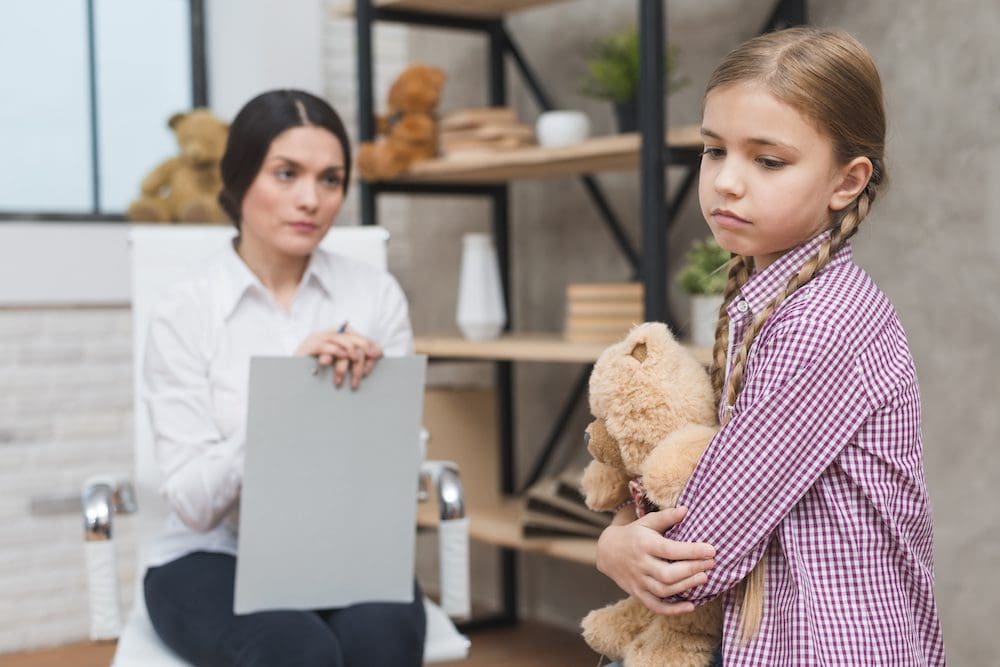Full Disclosure: Clicking on these links could mean a tiny commission for me, at no extra cost to you.
Anxiety is an exhausting feeling with the power to disrupt daily activities, and autistic children may find it particularly challenging to deal with. These jitters might be subtle for adults but are frequent for children.
As a parent of an autistic child, you will go through different stress levels while trying to help your child manage anxiety. However, there are solutions and strategies that you can use to help your children, and we will address them in this article.
What Is Anxiety for Autistic Children?
Before knowing how to manage stress and nervousness in your child, recognizing signs and understanding the triggers of anxiety are vital.
The signs of anxiety in your autistic child will differ from those in your neurotypical child. Behavioral changes are the first to look out for, as your child will be restless, agitated, and repetitive. Verbal responses, bolting, stimming, reverting to previous behaviors, sensory sensitivities, and communication difficulties will also slowly come in.
After successfully identifying the behavioral patterns, you want to know what triggers those patterns for effective management, and any autism services center you visit will gladly walk you through them. Autistic children may have common triggers like routine changes, challenging tasks, interactions with people, unfamiliar people or environments, bright lights, and loud noises.
Anxiety Management Strategies
Let’s discover some strategies and solutions for managing anxiety in autistic children.
1. Create a Routine
Developing a routine for your child helps manage their behavior and engage them in activities. Use symbols, words, and pictures to make it visual and easy to understand. Make a schedule or checklist outlining their daily routine to help them have a smooth day.
Since the routine outlines the day’s activities, include time for each and use timers for easy transitions between activities. Remember that consistency is key. Schedules must be attended to even on odd days and holidays. In the case of unexpected events, be ready to explain the situation to your child to help them reduce anxiety.
2. Try Visual Aids
For understanding and processing information, visual aids are the best. This technique helps reduce and manage anxiety by visually illustrating expectations in various circumstances. One type of visual aid to try is the visual schedule — which entails using symbols or pictures to depict the day’s activities. By predicting what activities come up next, anxiety can be managed.
You can also try social stories to explain family and social situations and expectations. These visual aids must be kept simple and clear. Language, pictures, and symbols must be easy to understand. Review these depictions with them frequently. This method can be dynamic, but it may not work for all autistic children.
3. Deep Breathing Exercise
Practice the deep breathing exercise with your child to regulate emotions and manage anxiety. This method is straightforward and environment-friendly. Teach them to get comfortable, close their eyes, take deep breaths through the nose, and exhale through the mouth. Repeat the process until the anxiety is gone and your child is relaxed.
You can be innovative by making the deep breathing exercise fun. This technique can be included in their daily routine and practiced with other family members. It is important to note that this method may only work for your child if they are comfortable taking deep breaths. It is key to find what works for them.
4. Safe Space is Important
Everyone likes the idea of a safe space to be themselves; the same goes for autistic kids. Create a safe space that is homely and cozy, where your child feels secure. You can make it a room with comfy seats, calming lighting and music, and sensory objects or toys to help you self-regulate your child.
Motivate your child to visit the safe space when they feel anxious, but you must teach them the signs of anxiety. This will help them see the need for a safe space and use it appropriately. Your child will feel secure and in control of this space, reducing anxiety.
5. Sensory-Friendly Environment
Autistic individuals have sensory overload and are highly sensitive to their environment, which can trigger anxiety. To manage anxiety and provide security for your child, create a sensory-friendly environment. Reduce sensory input by cutting down on clutter, reducing noise, and dimming lights in a safe space.
Provide sensory tools and toys like sensory balls, fidget toys, or teddy bears to promote self-regulation for your child in the sensory room. Remember that children are different, which might not work for your child. Providing a sensory-friendly environment is a powerful tool for managing anxiety in autistic children.

Source: FreePik
6. Get Expert Help
After trying all you can, and your child’s stress and anxiety are yet to improve, you might want to get an expert’s help. It can be difficult to accept, but knowing when to seek help is important. You can visit an autism services center near you to see a therapist who can provide more solutions.
The therapist may sometimes try cognitive-behavioral therapy (CBT), play therapy, art therapy, theater therapy, or medication. If you live in Illinois, Indiana, Iowa, Michigan, or Nebraska, you can visit Light House Autism Centre and seek professional help. They offer services like ABA autism therapy, fusion therapy, and parent training programs.
Conclusion
Autistic children have unique needs and require a little more attention than neurotypical children. Autistic folks commonly experience anxiety, so it is essential to understand the signs of anxiety and teach them to your child, recognize the triggers, and be updated with working solutions. Bear in mind that every child is unique, and it may take a while to figure out what technique helps manage their anxiety.










